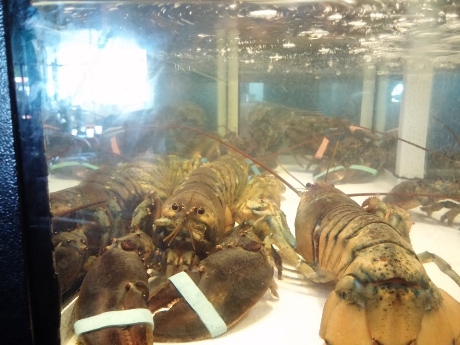When did boiling animals alive become an acceptable summer pastime? I’m referring, of course, to the gruesome but widespread practice of dropping live lobsters and crabs into pots of scalding water, ignoring their frantic attempts to escape and calling it dinner. Kind people who would never dream of doing such a thing to any other type of animal seem to have a blind spot when it comes to the suffering of crustaceans.
We know that lobsters can feel pain (and even if we didn’t, shouldn’t we give them the benefit of the doubt?), yet in the U.S. alone we condemn 20 million of these animals to a painful death for our dinner plates every year. Enough.
I first learned of this barbaric summertime ritual in elementary school, when I was invited along on a beach trip with my best friend, Elizabeth, and her family. It was the first time I’d ever been away from home without my parents, and everything about the trip seemed like a great adventure—until the night that we had crabs for dinner. I remember watching Elizabeth’s mother put a kettle of water on the stove to boil. Then, someone produced a bag full of live crabs. Just as I was starting to think that there must be some mistake, the crabs were unceremoniously dumped into the boiling water. The fun was over.
While lobsters and crabs may seem very different from us—with their exoskeletons, claws and strange-looking antennae—in the ways that truly matter, they’re more like us than we may care to admit.
Numerous physiological and behavioral studies of crustaceans have shown that lobsters feel pain and when boiled alive likely suffer every second of the three long minutes that it takes for them to die. Scientists have confirmed that when lobsters struggle frantically to climb the sides of the pot, these are panic and pain responses. At crustacean slaughterhouses, as a PETA eyewitness investigation revealed, lobsters and crabs are routinely dismembered while they’re still alive and fully aware.
In 2005, the European Food Safety Authority concluded that crustaceans are capable of experiencing pain and distress and recommended that steps be taken to lessen their suffering whenever possible.
In 2009, Dr. Robert W. Elwood, a professor of animal behavior at Queen’s University Belfast, published papers on this issue in the journals Animal Behaviour and Applied Animal Behaviour Science. “With vertebrates we are asked to err on the side of caution and I believe this is the approach to take with these crustaceans,” he says. Elwood’s experiments have even led him to change how he treats the invertebrates in his laboratory. He now uses fewer animals in his experiments and strives to keep the potential for suffering to a minimum.
And more than a decade ago, after the late David Foster Wallace visited Maine’s annual lobster festival—which he said had aspects of a “medieval torture-fest”—he was compelled to scour the available literature on crustacean pain and to ask readers to “consider the lobster.” In his now-classic essay of the same name, Wallace wrote that “after all the abstract intellection, there remain the facts of the frantically clanking lid, the pathetic clinging to the edge of the pot. Standing at the stove, it is hard to deny in any meaningful way that this is a living creature experiencing pain.”
In 2016, surely we can all agree that we do not need to cook animals alive for our supper. We have other choices. Besides tasty mock lobster and crab, other vegan summertime options abound, from corn on the cob to gazpacho to grilled veggie burgers to watermelon. When we choose these kinder options, dinner won’t resemble a horror show.






